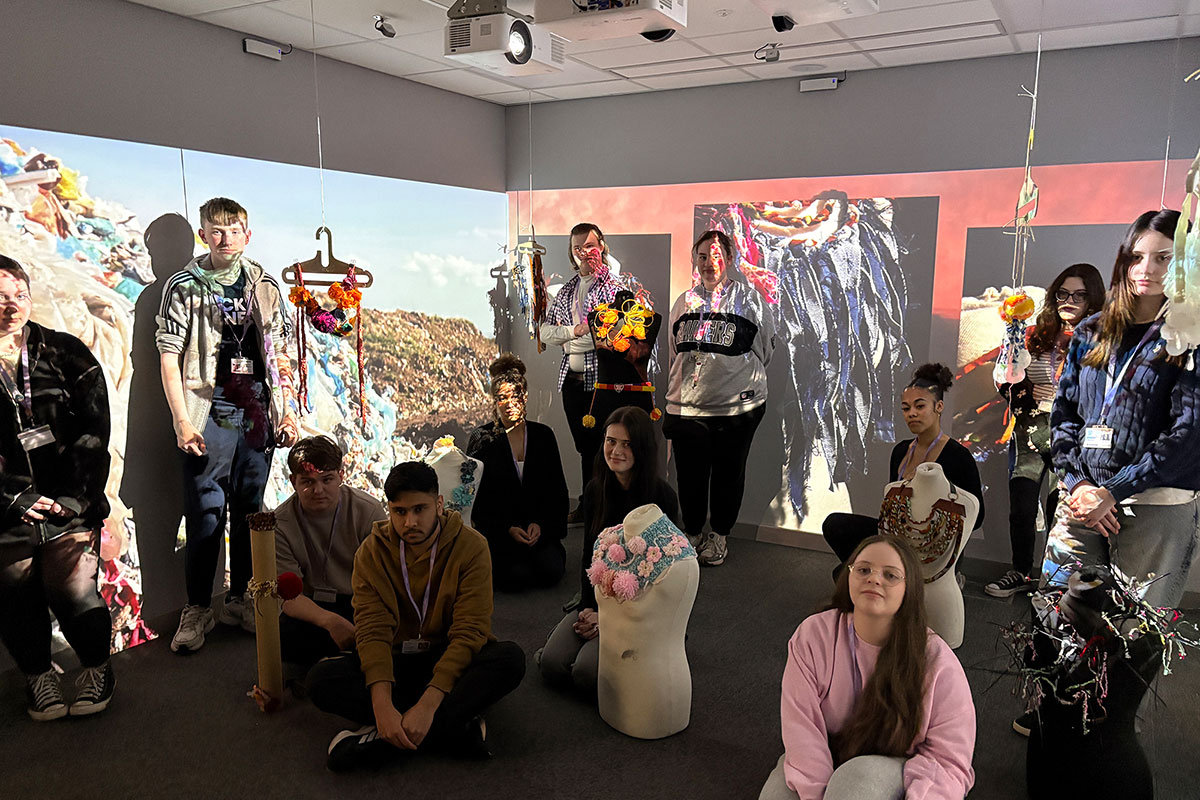Leadership Powered by AI: Navigating Toward Collaborative Decision-Making

Are you seeking to bring your team together and navigate complex decision-making? In this article, I’ll explore how artificial intelligence (AI) can enhance leadership, making teamwork more effective and inclusive.
Mapping Out the Issues
A study by Creswell & Creswell (2017) identified key leadership themes from interviews with principals, including shared leadership, high expectations, data-driven communication, and professional growth. The data highlighted the value of collaboration in strengthening decision-making and fostering professional growth.
However bringing together individuals with different viewpoints, experiences, and communication styles can sometimes lead to misunderstandings or conflicting opinions. Managing varying levels of engagement, and ensuring that everyone’s voice is heard can feel like an added layer of complexity on top of the daily demands of leadership.
As a school administrator, I faced similar challenges—balancing diverse opinions, managing engagement, and ensuring every voice was heard. If only I’d had a tool to streamline collaboration and improve decision-making.
I remember feeling the temptation to just make decisions on my own and avoid these hurdles, but doing so often misses the value that collective input can bring. When done effectively, collaboration strengthens decision-making and can lead to more innovative, inclusive solutions—especially with the right tools in place to facilitate the process.
With Artificial Intelligence (AI) as a partner, collaboration becomes more streamlined and effective. Whether you’re a principal, a manager, or a leader in any field, AI is a powerful tool to help you work smarter and create a stronger, more cohesive team.
Setting a New Course
With the rise of generative AI, leaders now have a new compass to guide them. And as AI continues to transform industries worldwide, its potential impact on education is becoming increasingly clear.
According to Nicola Pearce, Head of Education at BenQ, the global AI market is projected to grow over 28% annually by 2030, which urges educational leaders to embrace the benefits this technology offers (Pearce, 2024.) By integrating AI into schools, both staff and students can experience streamlined processes, improved decision-making, and a more collaborative environment.
AI provides data-driven insights that allow us to address complex challenges with greater effectiveness. Reflecting on my own leadership journey, I see how AI could have played a critical role in setting norms, managing details, and analyzing problems, ultimately enhancing my skills for leadership and decision-making.
As you explore the strategies and prompts shared here, feel free to customize them with your own de-identified information to meet your specific needs. Or you can test how the AI chatbot would respond using hypothetical data. Simply add this sentence to the prompts: “Give me an example of how you would answer this prompt using hypothetical data.”
Anchoring Success in Collaboration with AI
Success goes beyond achieving goals; it involves fostering a culture of collaboration and innovation. This not only leads to a more creative and forward-thinking faculty but also creates a more just and equitable workplace (DeWitt, 2016).
AI can play a crucial role in this transformation by providing opportunities to experiment and innovate. Change can be tough, that’s for sure. But when your team is strong and feels supported, they’re more likely to take risks and work toward creating a workplace that’s always growing and changing.
You can do this by using AI to assist in establishing team norms, managing meeting logistics, and analyzing feedback. The AI chatbot can streamline the process by identifying patterns, quickly sorting through large amounts of data to highlight key insights, and organizing meeting outcomes into actionable steps. This frees up valuable time and mental energy.
AI can take care of the small stuff, so you can focus on what really matters: building strong relationships, fostering collaboration, leading your team with clarity and driving innovation.
Creating Norms with AI Assistance
Do you ever wish team meetings were more productive and run smoother? AI can help steer the occasional turbulence into opportunities for growth. A great place to start is by getting everyone on the same page.
Begin by asking an AI chatbot to generate a list of meeting norms. Then, present those suggestions to your team to discuss which ones to keep, adjust, or add. This ensures the norms reflect your team’s values and goals, setting the foundation for more effective collaboration.
The following prompt helps guide AI to create customized meeting norms that align with your team’s objectives and roles.
Sample Prompt: Considering our goals for this meeting: [insert goals] and our roles as leaders within the organization [insert details, i.e. department chairs]. Draft a set of norms that will guide our team’s interactions and decision-making. These norms should reflect our commitment to fostering open communication, inclusivity, conflict resolution and effective teamwork.
Mastering the Details with AI
Disorganized meetings drain energy and hinder collaboration. I remember attending a session with no agenda, too few chairs, and a late start, leaving everyone frustrated. AI can help avoid this by generating checklists, clear agendas, and efficiently organizing topics.
It can also create pre-meeting surveys to gather input, ensuring meetings are well-prepared and focused on meaningful outcomes. Here’s a prompt to help you get started with AI-generated logistics and planning for a more organized and productive meeting.
Sample Prompt: Create a detailed checklist of the logistics for setting up an interactive learning session with [insert your work group, i.e. a school faculty]. The environment needs to be welcoming and conducive for small groups to collaborate: discuss, record and share new learning with the whole group. Include a list of materials needed. Include a list of healthy food options for snacks during the meeting.
AI-Driven Analysis
There’s nothing more powerful than having the right data at your fingertips, and AI makes that possible in ways I hadn’t imagined. AI can help make decision-making easier by offering data-driven insights that uncover patterns, highlight trends, and suggest potential solutions. With this technology, leadership teams can make more informed and strategic choices, encouraging well-rounded discussions that take all perspectives into account.
These insights not only help with comprehensive problem-solving but also ensure decisions lead to more effective and lasting outcomes. Here’s a prompt to help your team identify the root causes of issues and develop actionable strategies using AI insights and suggestions.
Sample Prompt: You are a member of a leadership team at a [insert workplace, i.e., school campus serving 500 elementary students]. The team needs to address the issue of [insert issue, i.e., high employee turnover rates; employees are leaving within their first year of employment]. Task: 1) Identify 5 potential root causes of this issue. 2) Develop 5 strategies to address and improve these issues. 3) Factor in elements such as workplace culture, work-life balance, and methods for gathering employee feedback on development opportunities. Provide evidence-based resources for further study.
Using AI to Navigate Through a Storm
Every leader faces moments when team dynamics become complicated or decision-making stalls. Whether it’s navigating differing opinions, balancing workloads, or adapting to change, these challenges can slow progress.
That’s where AI comes in—helping leaders stay ahead by offering insights and solutions. This helps teams stay aligned and moving forward, even in difficult situations. As a leader of any team, your role is to guide discussions in a way that uncovers and resolves issues, such as communication barriers and potential biases that may be hindering effective teamwork.
In the sample prompt below, the team is meeting to discuss and assess their current collaboration skills. By creating a list of targeted questions, you can help the team reflect on their communication norms, conflict resolution strategies, and overall teamwork dynamics.
This prompt generates questions to explore team collaboration and foster a more inclusive, effective work environment.
Sample Prompt: You are a leader who is meeting with a team to discuss and assess issues with their current collaboration skills. Create a list of questions that will help identify communication barriers and potential biases, fostering a more equitable and collaborative environment. The goal is to encourage the team members to talk about their communication norms, conflict resolution skills, and teamwork. The outcome is a proactive session that will strengthen the team and improve collaboration.
Crafting Consensus with AI Support
Building consensus on any project can be challenging and time-consuming, especially when balancing diverse perspectives and trying to get everyone on the same page. I recall sitting through meetings where endless wordsmithing over a mission or vision statement stalled progress, leaving us all frustrated.
To build consensus effectively, it’s essential to involve all stakeholders. Collecting input through surveys, focus groups, or discussions ensures diverse perspectives are considered, leading to greater buy-in. After gathering feedback, a smaller team can refine the ideas, with AI tools helping to condense and articulate them into a clear, unified message.
Here’s a prompt to help streamline this process and create a clear, focused vision statement based on team input.
Sample Prompts: Our team needs to get consensus on a vision statement that includes the feedback from our team. Summarize the following ideas from our team feedback into 10 concise statements that reflect the ideas. Write each statement in a way so that all who read it will be able to recite it and focus their work on achieving it. [Insert content collected from those affected.]
How do you get everyone to agree? Here are two ways to do it: consensus and compromise. Consensus means everyone agrees. It’s like trying to get everyone to agree on the same pizza topping. It can be tricky, but it’s worth it. Compromise is like finding the middle ground. It’s like choosing pepperoni and pineapple on the pizza. It might not be everyone’s favorite, but it’s a good way to make everyone happy.
Below is a prompt to guide your team through building consensus or finding compromise with clear group activities.
Sample Prompts: You are working toward consensus or compromise with a team of people seeking to reach agreement on which words best explain their school vision and mission. Create a list of group protocol exercises, such as “Dot Voting,” that we may use in this task. Explain how each protocol works.
Charting a New Path Forward
As we set sail into the future of AI-informed leadership, it’s essential to remember that the journey isn’t about relying on technology alone. It’s about enhancing our human capacity for collaboration, creativity, and decision-making with the support of AI. By integrating AI into our leadership practices, we can streamline tasks, deepen our insights, and foster more inclusive environments where every voice is heard.
The true power of AI lies not in its ability to replace us but to empower us to lead with greater clarity and focus. Just like a well-charted course, AI provides the tools to navigate challenges more effectively, ensuring that we can guide our teams with confidence and purpose.
By Vickie Echols, Author of AI for School Leaders, Consultant and Transformation Coach











Responses